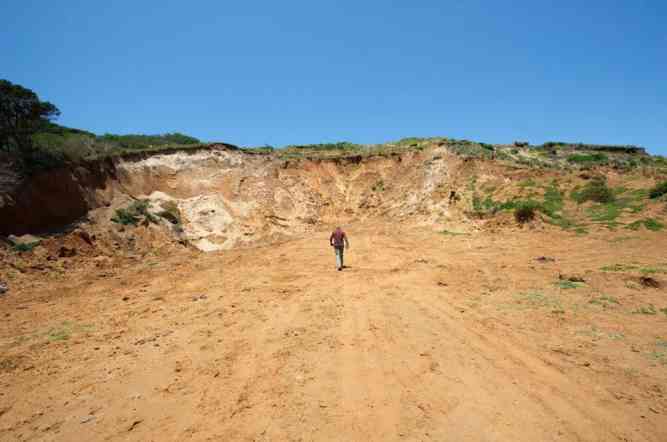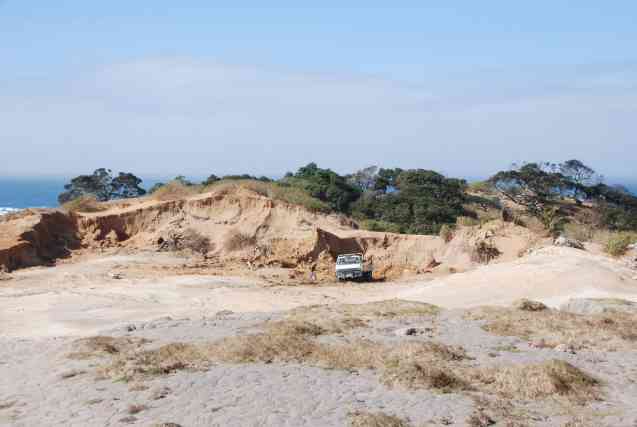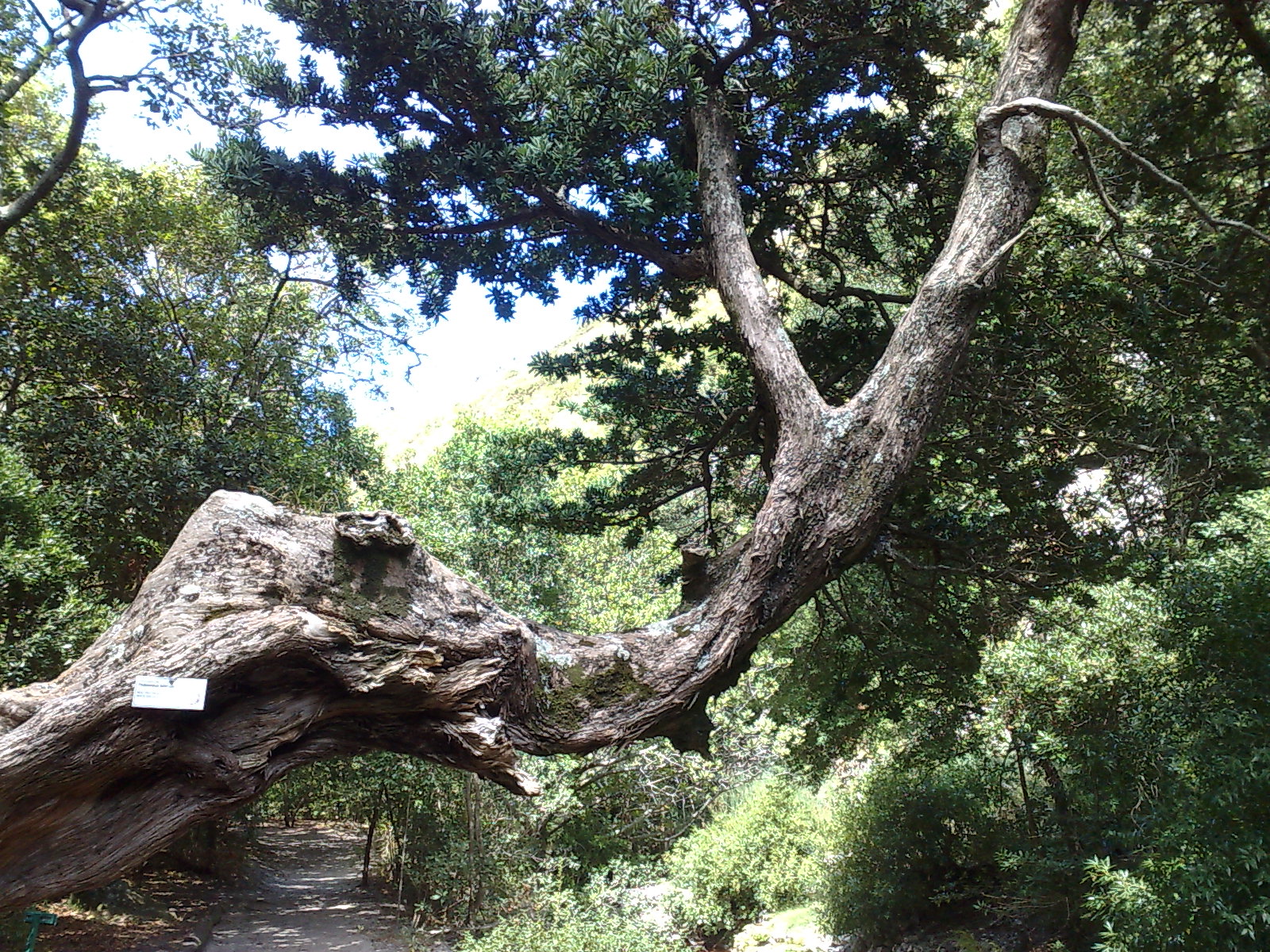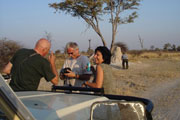Stop Illegal Sand Mining Destroying the Wild Coast in South Africa!
Losing the Wild Coast to Illegal Sand Mining
 Mine scar by Illegal Wild Coast Sand Mining
Mine scar by Illegal Wild Coast Sand Mining
As you read these words, illegal miners are rapidly carrying away the sand dunes at over 200 sites along the previously unspoilt Wild Coast.
Undermining the hard earned, yet tenuous, wins in protracted battles against proposed titanium mining and toll road construction this coastal region is now being destroyed for far less socio-economic gain in order to meet domestic demands for building sand.
Will over a decade of controversy and civil protest end in the uncontested and illegal destruction of these valuable natural assets, at the expense of the environment, local communities and tourism?
Picture it: a constant stream of 5-ton trucks removing the beautiful dunes of the Eastern Cape from the face of the earth, forever.
Illegal dune raiders are ravaging the stunning dune fields along the Wild Coast, turning them into mined-out wastelands and destroying fragile coastal ecosystems for quick profit. In the Eastern Cape building sand is in high demand, creating a gap in the market for shameless opportunists who are profiting from the free resources being plundered. Sand mining is a lucrative, albeit criminal, business that feeds the rising demand in this developing region and further inland. Journalists’ investigations have revealed that the unlawfully mined sand is being used to construct government schools, RDP houses and private homes.
In August 2014 Deputy Director of Environmental Affairs, Jaap Pienaar, told the Daily Dispatch that widespread illegal dune stripping “was causing massive damage to the Wild Coast, and if allowed to continue unchecked, would have negative long-term consequences for the region”.
The permanent environmental damage
From an environmental perspective the illegal dune raiding is having disastrous effects within the Coastal Conservation Area that runs along the shores of the Wild Coast. According to a Daily Dispatch report sand mines the size of five football fields are being carved out of the earth inside the protected 1km coastal zone.
 Mined coast by Illegal Wild Coast Sand Mining
Mined coast by Illegal Wild Coast Sand Mining
The damage being done to sensitive coastal and estuarine environments is irreparable and the biodiversity lost - irreplaceable - particularly in the absence of any rehabilitation measures. To make matters worse, the impacts of illicit mining in the 1km buffer zone, which is officially designated as a protected area, are not being managed, limited or monitored.
In March of 2014, the Daily Dispatch was already reporting that:
“…the mines are destroying hundreds of acres of natural flora, causing massive soil erosion and degradation of roads by heavily laden trucks. If not checked, this could lead to the loss of thousands of tons of fertile soil being washed away, landslides and slumps becoming more common as hillsides are made unstable, and the silting of rivers.”
In September 2013, the Draft Environmental Management Plan for the Wild Coast, released by the Department of Economic Development, Environmental Affairs and Tourism (DEDEAT), already acknowledged the gravity of the situation, reporting that the over 200 sand mines were starting to have “devastating negative environmental impacts” and that some sites were “in environmental terms totally unacceptable”. This draft plan by the DEDEAT stated that some of the existing sand-mining sites must be closed and proposed that other strategically located sites be legalized and managed properly.
The dangers and destruction
The damage, however, goes beyond environmental impacts. According to a recent traveler, the speeding truck drivers are endangering the lives of people who walk and drive on these once-quiet roads.
 Road to Qolora Mouth by Garethphoto
Road to Qolora Mouth by Garethphoto
A concerned resident explains that the miners and drivers frequently get drunk and disorderly, shouting at guests and locals, speeding and driving recklessly, and so endangering pedestrians using the roads as they go about their daily lives, as well as visitors heading to the beach. There have already been instances of pedestrians being knocked down and seriously injured, while numerous animals have been killed, hitting subsistence farmers hard.
A lodge owner, who has requested to remain anonymous for fear of retaliation (I will call him John), says that the dune raiding,
“…has a huge impact on tourism, as not only does it destroy the untouched beauty of the Wild Coast and create noise pollution in the whole area, but most of the truck drivers and sand loaders create major disturbance in the area”.
 Port St Johns by Diriye Amey
Port St Johns by Diriye Amey
Furthermore, the daily stream of heavy trucks is worsening the condition of already poor roads, as well as fast damaging re-graveled rural roads. The deteriorating road conditions affect locals, as well as having a negative impact on tourism, making destinations harder to reach and increasing travel times, which limits access to intrepid visitors with lots of time and hardy 4x4 vehicles.
The negative impacts on tourism
Locals have to endure the noise, the dust and the pollution caused by the succession of large trucks, along with the presence of dangerous and intimidating drivers, but tourists looking for some peace and quiet in untouched nature, are likely to go elsewhere. As the natural beauty and tranquility of the region are permanently demolished and the infrastructure is ruined, so the income-generating potential of the Wild Coast as a tourist destination disappears.
 Aerial view by Illegal Wild Coast Sand Mining
Aerial view by Illegal Wild Coast Sand Mining
Tourism is currently the main source of income for many of the Wild Coast villages, so the collapse of the tourism industry would result in an economic crisis, unless alternatives solutions are provided soon. This means that with the inevitable decline in tourism development, communities will lose the long-term economic benefits and be left instead with a scarred coastline and a host of unsolvable environmental problems!
Communities are being exploited - the locals are being swindled for their beach sand and a few of them are getting low-income, illegal jobs.
The underdeveloped Wild Coast villages are joining in on the free-for-all dune raids that are taking place along the entire coastline, for meagre profits. Poor communities are trading in their livelihood security, for as little as R150 per tuck load of beach sand and a few temporary jobs, in return for silent consent. Ironically, these historically disadvantaged communities are getting ripped-off in return for cooperation, as the truckloads of sand that they fetch R150 for, are then retailing at between R1200 and R2600 per 8-ton load.
The groups of local men earning a minimum weekly wage by shovelling sand, receive much-needed income, but without skills development, employment benefits, medical and legal protection or long-term job security. The business of illegal mining whilst lucrative for those selling sand, is unsustainable and as such will only provide a few local people with insecure employment for as long as the non-renewable resources last and government fails to take action.
Although the main demand driving the strip mining is coming from businesses – local contractors, building supply stores in the region and big construction companies, some of the illegally mined sand is also being used to build local houses in the villages where the concrete benefits of democracy have been painfully slow to materialize. Every area along the coastline has an illegal mine, some of which were started to build local houses, whilst others were started to build the tourism establishments themselves.
Another serious consequence of the illegal dune stripping is the growing conflict it’s causing in local communities along the Wild Coast.
The informal deal between sand mining businesses and the rural villages is giving rise to conflict in some of the impoverished communities involved, as interests collide and corruption undermines the short-lived benefits intended for entire villages that tow-the-line. The payoffs are ending up in the hands of a few community representatives who often pocket the cash, adding to the mounting tensions existing between people who take a different stand on the mining activities. Clashes between the men earning weekly wages by digging up sand and the livestock owners and farmers, are especially volatile.
Local lodge-owner, John, gives this dire account of the situation:
“What happens is certain people are told to collect the money and after a period of time these collectors are asked by the community to bring forward the money collected. Every time this happens the money has been spent and the collector has nothing to show for it. The community then forces that person to pay the outstanding amount through livestock and this livestock will generally be slaughtered and they will throw a huge party. There is not one project or beneficial input towards growth in the community from the sand money.”
In the Port St Johns area, villagers are less concerned with the consequences of the mining, the general consensus being that it provides income. Wild Coast resident, Dries Van der Merwe, says that the more affluent residents are the ones in conflict with mining supporters and workers, resisting the illegal developments and calling for government intervention. For poorer community members, the reality is that when your daily survival is of primary concern, nature takes a backseat.
The context of this complex issue
Resolving the dune-raiding problem is not as simple as stopping a few unscrupulous sand miners from degrading the local environment. It’s a complex crisis embedded in the unique historical context of this rugged region. This exceptional stretch of coastline falls within the former Transkei area, created under the Apartheid Regime. The remote 250km long coastal zone is scattered with rural villages, holiday homes and tourist destinations, the best-known tourism spots being Coffee Bay and Port St Johns. Known as the Xhosa heartland, this is one of the poorest parts of the country, and incidentally also Mandela’s birthplace.
In the past, the lack of infrastructure and investment in the former Transkei inadvertently sheltered the scenic coast from the negative effects of rampant development, keeping the place “wild”. Unfortunately, this lack of development has simultaneously resulted in a myriad of socio-economic and political challenges specific to the province.
 Beach from Wild Lubanzi by fabulousfabs
Beach from Wild Lubanzi by fabulousfabs
Much of the land along the Wild Coast is communally owned and managed, making regulation problematic. The shared landownership arrangement complicates matters, in terms of awarding licences for sand mining activities. In November 2013 the DEDEAT Draft Environmental Management Plan stated,
“it has thus far been impossible for the Department of Mineral Resources to legalize sites, as it invariably proves to be impossible to get agreement on who the holder of a mining license should be, and to who and how benefits from sale of sand should accrue”.
What actions have been taken to halt the illegal mining?
Late last year, African Budget Safaris CEO, Terry Murphy, paid a surprise visit to one of the sand mining sites near the small seaside village of Coffee Bay – a popular spot with free-spirited local and international travellers. Caught red-handed the men that were mining at the beach, fled from the scene when he arrived, fearing that Murphy was an authority. Illegal mining is not new to the area – by the time Murphy visited, the nearby Mdumbi River Mouth was already “completely wrecked, leaving behind an eyesore”.
 Erosion by Illegal Wild Coast Sand Mining
Erosion by Illegal Wild Coast Sand Mining
The situation is especially complicated, because of the multiple parties involved – some with conflicting interests, and even government officials may have hidden agendas. Inaction to date may suggest that government officials are complicit. Thus far local, regional and national governmental departments, including the Department of Mineral Resources (DMR) and the DEDEAT, and the South African Police (SAP) have not stopped the extensive illegal sand mining that is causing massive destruction. John says that attempts to stop the mining nearby have thus far lead to nothing, but dead ends and frustration. According to John, “everyone just turns a blind eye – we are not sure who is passing the buck, but nothing is being done.”
The Green Scorpions took some action in 2014, staging a blitz that resulted in one arrest in March and another two in August. The case against Zayedwa Ndabeni is still pending, but given the difficulty of allocating responsibility; two of the men arrested were released.
A contact in the DEDEAT says that some fines were issued and a few trucks were also temporarily confiscated, but actively involved businessman, Van der Merwe, says that no miners have been fined. Van der Merwe concurs that trucks were temporarily confiscated, but then released, including that of Ndabeni, which was released by the Port St Johns station commander.
Reports vary as to the reason for the crackdown – some say it was staged in response to community complaints; others suggest the two-month Daily Dispatch investigation, exposing the widespread illegal exploitation, was the catalyst. Regardless, by September last year government and police officials had backed off again, with the Minister of the DEDEAT, Edna Molewa, stating that the department had received complaints from local communities that depend on the sand mining for income.
In December last year authority was officially shifted from the DEDEAT to the DMR, although most of the illegal mining cases contravene laws under both departments simultaneously. As the licensing and monitoring body of mining activities, the DMR is responsible for prosecuting offenders. Much of the illegal mining is taking place in the 1000m Coastal Conservation Area, which falls under the DEDEAT mandate. According to Van der Merwe, in most cases “the miners should be charged for illegal mining and damage to the exclusion zone”, as well as for trespassing and damage to private property, in the Port St Johns area.
The outcomes to date
Despite the repeated calls for intervention from several concerned residents (affluent and underprivileged), and local tourism ventures, the dune raiding is still going ahead today, unimpeded by government bodies and law enforcement officials. In Port St Johns, residents have had some limited success that saw the closure of two mining sites - sites that simply moved operations elsewhere on the coast.
One of the major challenges for interested and affected parties trying to stop the prohibited mining is simply trying to get hold of someone with both the authority and the willingness to take action and protect the human and natural capital being exploited one heaped truckload at a time.
 Mining truck by Illegal Wild Coast Sand Mining
Mining truck by Illegal Wild Coast Sand Mining
The response I personally managed to get from the DMR in February 2015, confirmed that Mine Health and Safety together with Mineral Regulation in the Eastern Cape, are in the process of dealing with this problem in the Port St Johns area. DMR actions to deal with the problem include discussions with the municipality, police, complainants and the National Prosecuting Authority (NPA), in January 2015. DMR media liaison says that the DMR in the Eastern Cape intends to hold an information workshop with all of the interested and affected parties – again only in Port St Johns - in order to discuss this sand mining situation. I was further informed that it is impossible for Mine Health and Safety to enforce compliance with the law as the illegal mining is prohibited under a different act.
In reply to my question of what has already been done in the past, the DMR confirmed that a suspect had been arrested for widespread illegal sand mining in the area (presumably Port St Johns), but that the outcome of the court case is still outstanding. The DMR only has regional offices in Mthatha and still needs to establish a policing and enforcement arm with the rights to arrest guilty parties. The DMR in the Eastern Cape is at this stage recruiting staff. As an active campaigner, Van der Merwe, says that the DMR has not taken any steps to implement the laws being broken and control mining along the Wild Coast. To the contrary, he says of the DMR, “they seem rather noncommittal in actions or suggestions against this problem”.
In the meantime, the severe and irreparable damage continues as the government officials fail to take action. Yes, the local communities urgently need changes that promise to help alleviate poverty here, but at what environmental cost?
Hanging on to hope
One of the last truly untouched places left in South Africa, the Wild Coast, is being destroyed in return for short-term tradeoffs and profits reaped by a handful of opportunistic law-breakers – as tourism ventures battle to be heard and the government reticently responds with excuses and half-hearted actions.
 Long Beach, Port St Johns by tmechin
Long Beach, Port St Johns by tmechin
Implementation of the aims presented in the DEDEAT Draft Environmental Management Plan for the Wild Coast (September 2013) urgently need to be implemented, starting with the need to
“…create a balance between the development of an underdeveloped, high poverty region and the protection of an environment which is nationally and internationally recognized as being of exceptional value and importance”.
Probably one of the most workable solutions proffered to date, is to legalise some of the mining sites to meet the need for sand to build local houses. Legalising some mining sites offers a compromise with the potential to meet the growing demands of local development, whilst operating within the laws intended to protect the environment and attendant tourism industry.
What Can We Do?
Support the Illegal Wild Coast Sand Mining Facebook Page.
SIGN the online petition to stop illegal sand mining on the Wild Coast of South Africa.




 Landia is a nature and animal lover. This South African woman avoids crowds seeking out quiet places. She has worked in the African safari industry for over 16 years!
Landia is a nature and animal lover. This South African woman avoids crowds seeking out quiet places. She has worked in the African safari industry for over 16 years!

 An Open Letter to the president of South Africa, Dr Jacob Zuma, and African National Congress, is calling for an end to all further logging of our national tree in South Africa, the Yellowwood. It's time to hede the message carried in this letter, On the State of South Africa’s Yellowwood Forests.
An Open Letter to the president of South Africa, Dr Jacob Zuma, and African National Congress, is calling for an end to all further logging of our national tree in South Africa, the Yellowwood. It's time to hede the message carried in this letter, On the State of South Africa’s Yellowwood Forests.

 Self Drive Budget Safaris in South Africa give travellers the freedom to tailor their own experience, while taking the hassle out of planning everything and hunting for the best value accommodation and top attractions.
Self Drive Budget Safaris in South Africa give travellers the freedom to tailor their own experience, while taking the hassle out of planning everything and hunting for the best value accommodation and top attractions.


